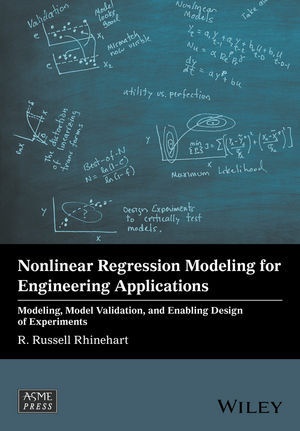Read more
Informationen zum Autor R. Russell Rhinehart , Oklahoma State University, USA. Professor Rhinehart obtained his Ph.D. in Chemical Engineering in 1985 from North Carolina State University, USA. His research interests include process improvement (modeling, optimization, and control), and product improvement (modeling and design). In 2004 he was named as one of InTECHs 50 most influential industry innovators of the past 50 years, and was inducted into the Automation Hall of Fame for the Process Industries in 2005. He has written extensively for numerous journals and refereed articles. Klappentext Since mathematical models express our understanding of how nature behaves, we use them to validate our understanding of the fundamentals about systems (which could be processes, equipment, procedures, devices, or products). Also, when validated, the model is useful for engineering applications related to diagnosis, design, and optimization.First, we postulate a mechanism, then derive a model grounded in that mechanistic understanding. If the model does not fit the data, our understanding of the mechanism was wrong or incomplete. Patterns in the residuals can guide model improvement. Alternately, when the model fits the data, our understanding is sufficient and confidently functional for engineering applications.This book details methods of nonlinear regression, computational algorithms,model validation, interpretation of residuals, and useful experimental design. The focus is on practical applications, with relevant methods supported by fundamental analysis.This book will assist either the academic or industrial practitioner to properly classify the system, choose between the various available modeling options and regression objectives, design experiments to obtain data capturing critical system behaviors, fit the model parameters based on that data, and statistically characterize the resulting model. The author has used the material in the undergraduate unit operations lab course and in advanced control applications. Zusammenfassung Since mathematical models express our understanding of how nature behaves, we use them to validate our understanding of the fundamentals about systems (which could be processes, equipment, procedures, devices, or products). Also, when validated, the model is useful for engineering applications related to diagnosis, design, and optimization. Inhaltsverzeichnis Series Preface xiii Preface xv Acknowledgments xxiii Nomenclature xxv Symbols xxxvii Part I INTRODUCTION 1 Introductory Concepts 3 1.1 Illustrative Example - Traditional Linear Least-Squares Regression 3 1.2 How Models Are Used 7 1.3 Nonlinear Regression 7 1.4 Variable Types 8 1.5 Simulation 12 1.6 Issues 13 1.7 Takeaway 15 Exercises 15 2 Model Types 16 2.1 Model Terminology 16 2.2 A Classification of Mathematical Model Types 17 2.3 Steady-State and Dynamic Models 21 2.3.1 Steady-State Models 22 2.3.2 Dynamic Models (Time-Dependent, Transient) 24 2.4 Pseudo-First Principles - Appropriated First Principles 26 2.5 Pseudo-First Principles - Pseudo-Components 28 2.6 Empirical Models with Theoretical Grounding 28 2.6.1 Empirical Steady State 28 2.6.2 Empirical Time-Dependent 30 2.7 Empirical Models with No Theoretical Grounding 31 2.8 Partitioned Models 31 2.9 Empirical or Phenomenological? 32 2.10 Ensemble Models 32 2.11 Simulators 33 2.12 Stochastic and Probabilistic Models 33 2.13 Linearity 34 2.14 Discrete or Continuous 36 2.15 Constraints 36 2.16 Model Design (Architecture, Functionality, Structure) 37 2.17 Takeaway 37 Exercises 37 Part II PREPARATION FOR UNDERLYING SKILLS 3 Propagation of...

